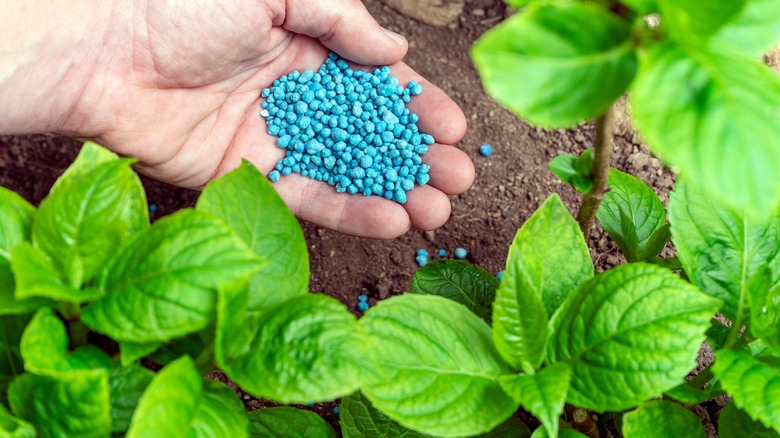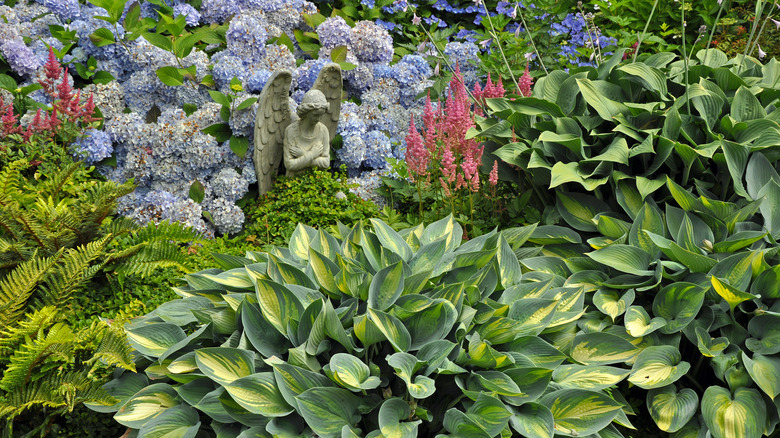Everyone needs a few good friends, and plants are no exception. Like people, some plants get along beautifully, while others prefer to keep their distance. If we were making a list of companions in the ornamental plant world, hostas and hydrangeas would be at the top of the list. Both their similarities and differences make them a good pair. These beautiful plants have the same environmental requirements, including soil conditions and hardiness zones, while their very different growth habits make them a complementary set.
Both hostas and hydrangeas are hardy in zones 3 through 9, although it does depend on the variety of each. Speaking of varieties, if you are considering adding hostas and hydrangeas to your landscape, you have many combinations from which to choose. Hydrangeas are available in different sizes with blooms that include white, bright pink, and purple. You can even create a stunning combo by pairing the bright green blooms of limelight hydrangeas (Hydrangea paniculata ‘Limelight’) with one of the many cultivars of variegated bright green hostas. When it comes to this fabulous duo, there is a lot of room for a unique landscape.
Agreeable growing conditions

When growing companion plants, the biggest consideration is finding out if they will thrive in the same environment. This includes sunlight, soil type, and the amount of water they need to grow. At the top of the list is hardiness zones. Each plant in the arrangement must be hardy to your zone, or they won’t make it through the winter. Likewise, a plant that likes dry soil conditions will not do well if it’s paired with something that requires a consistently moist growing medium.
As we mentioned, hostas and hydrangeas are generally hardy in the same zones. They also both thrive in consistently moist, fertile soil. Hydrangeas certainly put on a more dynamic show with their big, gorgeous blooms, but hostas also need good soil to make the most of their stunning, textured leaves. Some varieties of hostas also produce a significant number of delicate blooms on vertical stems in the summer. Since these two plants agree on soil conditions, you won’t have to worry about different amendments or watering schedules.
Complimentary growth habits

What makes this dynamic duo really pop in the garden are their contrasts. The height and width of hosta plants and hydrangeas vary greatly depending on the varieties. The largest hydrangeas can reach over 10 feet tall, while compact options stay under 4 feet tall at maturity. Likewise, there are compact hostas and much larger cultivars. What remains common between all the varieties available is the ability of hydrangeas to offer a beautiful backdrop, while hostas feature as a smooth understory plant. In all but the hottest environments, most hydrangeas do well in full sun, so their height provides shade for hostas — which grow best in partial shade. While these two plants have different sunlight requirements, their size and sun requirements complement each other nicely.
Contrast also plays a role in the aesthetics of a garden featuring hydrangeas and hostas. The dark, deeply veined leaves of hydrangeas offer stark contrast against the smooth teardrop shape of hostas. If you select a bright green or variegated hosta variety, the color contrast between the bright and dark greens is a feast for the eyes. The complementary growth habits of tall/short, light/dark, and smooth/textured all make for a perfect landscaping combo in the right environment.



